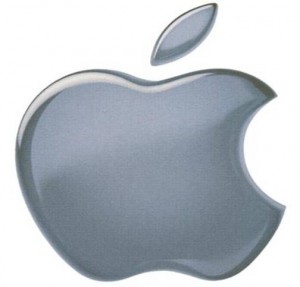 It is no surprise that competitive intelligence issues and activities regularly show up in business news. After all, intelligent and motivated professionals everywhere are furiously competing to win. To the untrained eye, it may seem that companies’ activities are disjointed or nonsensical (and sometimes they are). However, to someone trained in competitive intelligence, there are stories behind the public moves. From those stories, emerge motivations, strategies and opportunities.
It is no surprise that competitive intelligence issues and activities regularly show up in business news. After all, intelligent and motivated professionals everywhere are furiously competing to win. To the untrained eye, it may seem that companies’ activities are disjointed or nonsensical (and sometimes they are). However, to someone trained in competitive intelligence, there are stories behind the public moves. From those stories, emerge motivations, strategies and opportunities.
For example, take the recent New York Times article, “Apple Buys Intrinsity, a Maker of Fast Chips” at http://www.nytimes.com/2010/04/28/technology/28apple.html, about Apple. Apple, flush with cash and the serial hits of the iPod, iPhone and iPad, purchased a chip design company. What does this mean? How does it fit with previous Apple moves? How does it confirm or change Apple’s perceived strategy? What might their next move be?
These questions are fundamental questions for someone competing with Apple and the core domain of competitive intelligence professionals.
To answer the questions, start with some background observations.
- Apple processor choices are strategic decisions. Remember when Macs used Motorola (and then IBM) processors. As Intel processors began to outpace PowerPC in price/performance tradeoffs, Apple switched. The impact has been significant for Apple and its products. For the iPhone, Apple chose an ARM-based design (manufactured by Samsung). This was also strategic (but not differentiated) because the low power ARM architecture is the de facto standard for low powered, wireless devices.
- Apple prefers to control design. Indeed, it is easy to argue that attention to design issues primarily differentiates Apple. This shows up in everything that Apple does from software to packaging. Related to design, Apple prefers a high degree of vertical integration. That control allows for specific performance and functional capabilities that are difficult for less integrated companies.
- Apple has mastered media commerce. Starting with the iPod and music, now continuing with the iPhone (apps, video) and through to the iPad (eBooks), Apple uses the iTunes model to aggregate content, simplify the consumer experience and enable developers. Along the way, Apple takes its share of each transaction while driving sales of its own devices. The next logical expansion of selling ads to the captive Apple audience has already been announced.
What does all of this have to do with Intrinsity?
In 2008, Apple purchased PA Semiconductor. Even though PA Semiconductor specialized in PowerPC architectures, it was thought that Apple wanted their low power design expertise for future wireless device processors. Also in 2008, Apple purchased an architecture license from ARM. This meant that Apple has the rights to the internal design information for specific ARM cores and had the right to extend or modify those designs. (Others companies such as Texas Instruments and Qualcomm have architectural licenses for some ARM cores.)
Fast forward to 2010 when the new iPad included an Apple-labeled A4 processor. It all makes sense. The PA Semiconductor team must have designed an ARM based processor for Apple. (Technical Intelligence, Product Teardowns, M&A Activity)
The people familiar with Apple’s situation say that efforts to create a new chip for mobile devices from the ground up are stalling. In 2008, Apple purchased another chip maker, called PA Semi, for $278 million. That start-up also specialized in making fast, low-power chips.
But wait. Maybe all things are not well for the PA team at Apple. (Key People Tracking, M&A Activity, Competitor Strategy)
But a number of the PA Semi employees have left Apple — many of them disgruntled about their compensation, according to people with knowledge of the situation who were not authorized to speak publicly. Google, in fact, bought a start-up called Agnilux earlier this month filled with PA Semi engineers.
And how did outsiders first notice that Apple might be doing something new or different? (Key People Tracking, News Tracking, Primary Source Relationships)
Word of the acquisition began to leak out after technology trade publications noticed earlier this month that a number of Intrinsity employees had started to list Apple as their employer on the social networking Web site LinkedIn. Neither company, however, would discuss their relationship.
Now things get a little clearer and two things become apparent.
First, it is important to realize that although Apple has marketplace momentum and popularity, they are not infallible. It appears that they have the common difficulty of integrating acquired companies successfully into their strong culture. A strong counter move for its competitors is to attract the key leaders of the acquired companies. Who is good at doing this? Google. Google does many more acquisitions than Apple and has a more open culture.
Second, Apple has shown a willingness to spend money to increase its vertical integration in ways that similar companies do not. For instance, RIM, arguably Apple’s biggest smartphone competitor, does not have chip design capabilities. Buying Intrinsity means that their technology is no longer available to Apple competitors. Locking competitors out of performance enhancing technology gives Apple a competitive advantage. The Intrinsity resources also may mitigate the people moves from the PA Semiconductor group.
What is next?
Remembering that Apple is a media company, look for them to purchase companies that enhance media delivery or performance. For instance, a prime target for Apple would be the vendor of the graphics acceleration core in the A4. Acquiring Imagination Technologies would have a profound impact in the mobile space since many other semiconductor vendors rely on their accelerators. (Technology Trends, Early Warning, Scenario Analysis)
The story goes on and on. Apple, Google, RIM, Samsung, TI, Qualcomm and others are engaged in a fascinating commercial contest in the Wireless business. Each makes moves and the others counter. All have patterns, capabilities and limitations. Wrestling with each results (hopefully) in a winning formula.
Competitive intelligence is critical throughout the process. It helps weave a story through the seemingly random events over time. It helps explain what is happening, why it matters and what counter moves are possible. It helps leaders lessen surprises, gain confidence in decisions and get better results for their companies.


[…] Strategically Thinking » Competitive Intelligence in the News: Apple If you enjoyed this article, please consider sharing it! Tagged with: acquisition […]